The Importance of Landing Pages and How Your Business Should Be Using Them
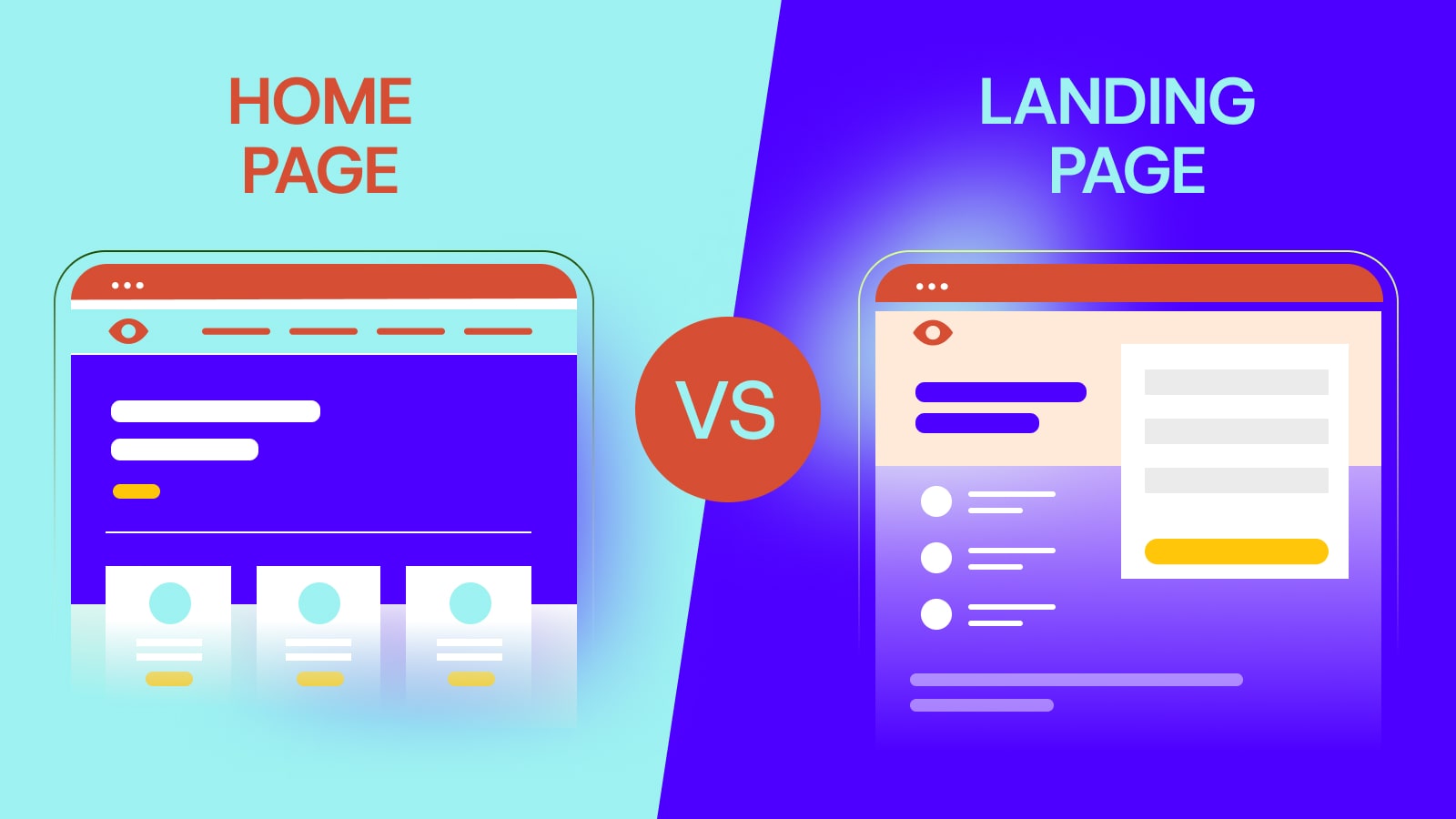
WANT TO SEE MORE LIKE THIS?
Sign up to receive an alert for our latest articles on design and stuff that makes you go "Hmmm?"
A landing page is a tool specifically designed to entice users to complete a certain action. When executed correctly, landing pages can be an effective way to capture conversions.
To determine how and when you should use a landing page, here are some answers to common questions.
What’s the difference between a landing page and a homepage?
The Homepage
A homepage provides a broad overview of your business’ offerings and acts as a portal to the rest of your website. The homepage satisfies the user’s need for information. Elements of the homepage inspire users to click links and explore other areas of the website.
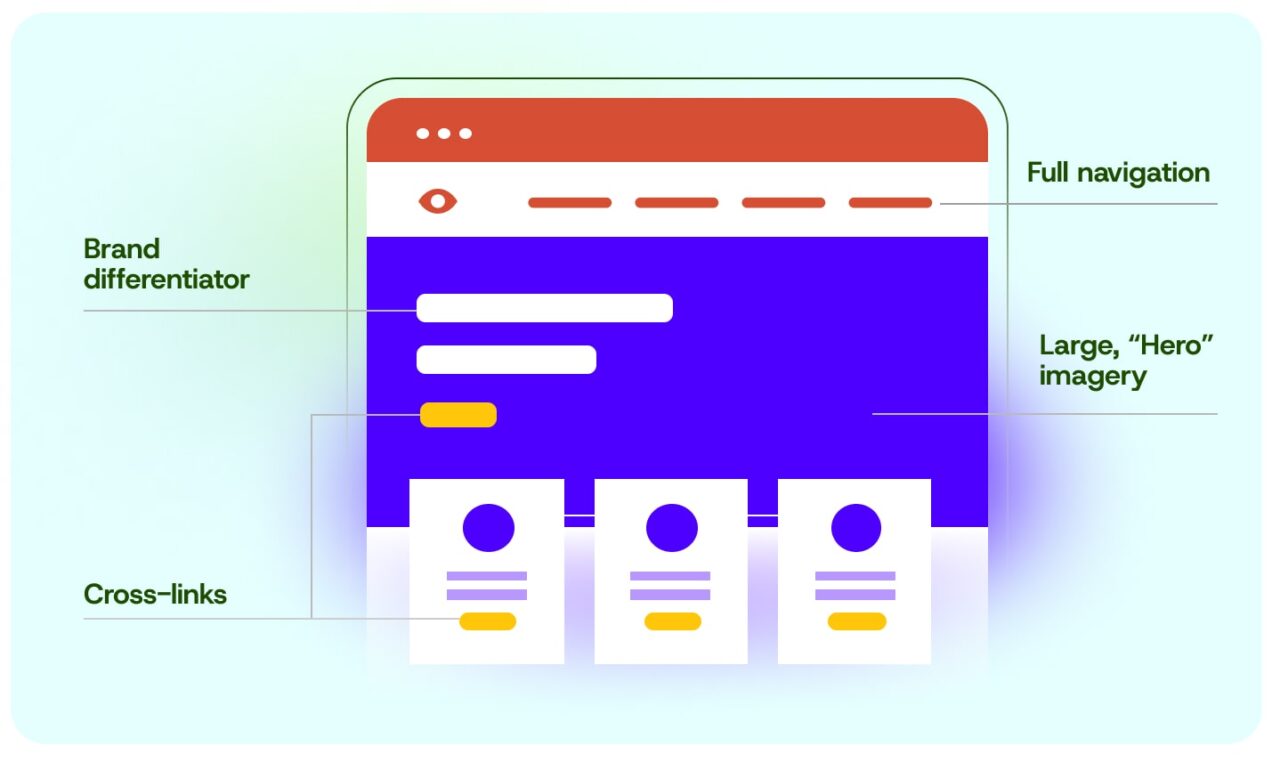
The Landing Page
A landing page is focused on driving conversions based on a specific offer or action that you want the user to take. There are no navigational links, because the landing page should have all the information the user needs, based on the ad that drove them there.
There are many instances where using a landing page is beneficial. Landing pages can be used to promote exclusive content, the launch of a product or service, a limited-time offer or an event.
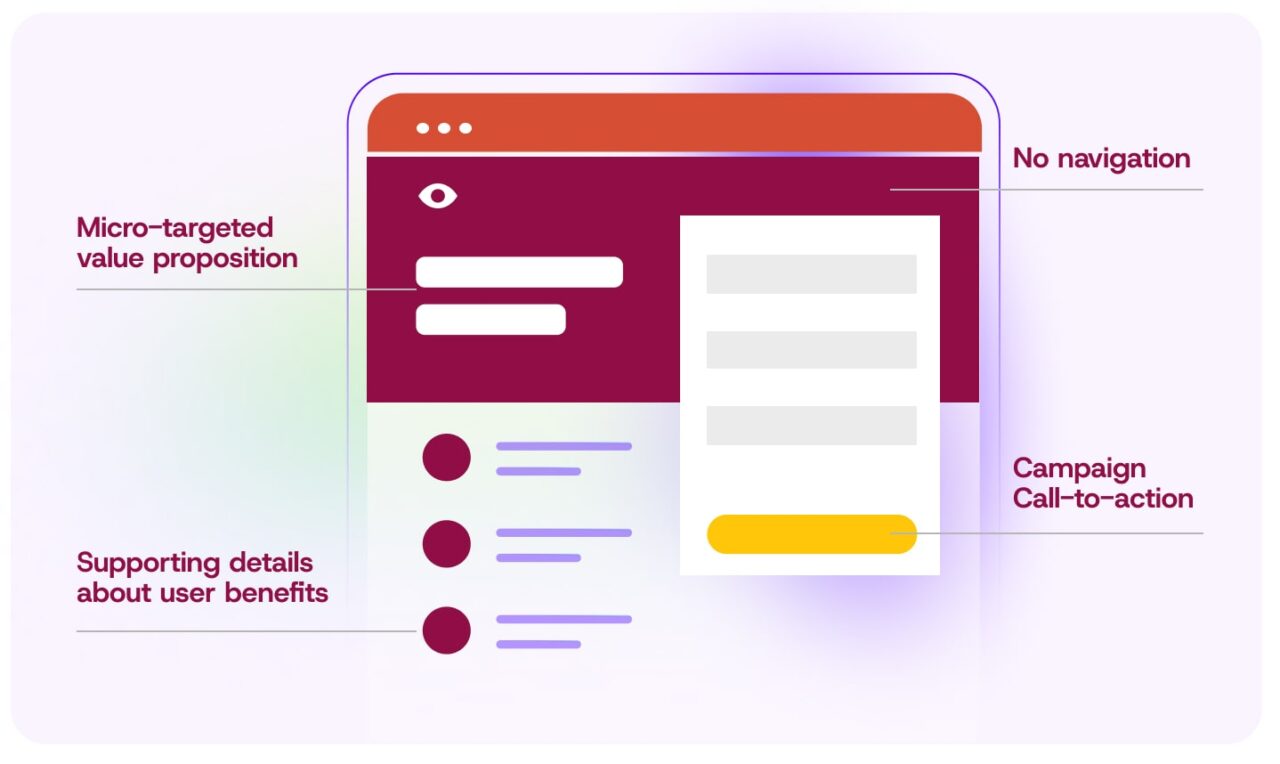
There are also instances where using a landing page doesn’t make sense. When running campaigns for the goal of awareness, a landing page isn’t necessary. When there’s a risk of overcomplicating the user journey (i.e., promotion of a simple product or service that already has a dedicated page on the website), a landing page isn’t needed.
When should I use a landing page?
As noted above, a landing page is especially useful when you want users to complete a specific action. Let’s use a paid search campaign for this example.
The overarching goal is to increase sign-ups for an upcoming event. Directing users from our paid ad to the homepage isn’t the best choice. The user will be unsure where you want them to go next after arriving on your site, potentially causing them to leave altogether. This would lead to a higher bounce rate on your website, and a lost conversion for your event.
Instead, drive users to a landing page that is related to the ad copy the user has clicked through from. The page should be clear about what you want the user to accomplish next.
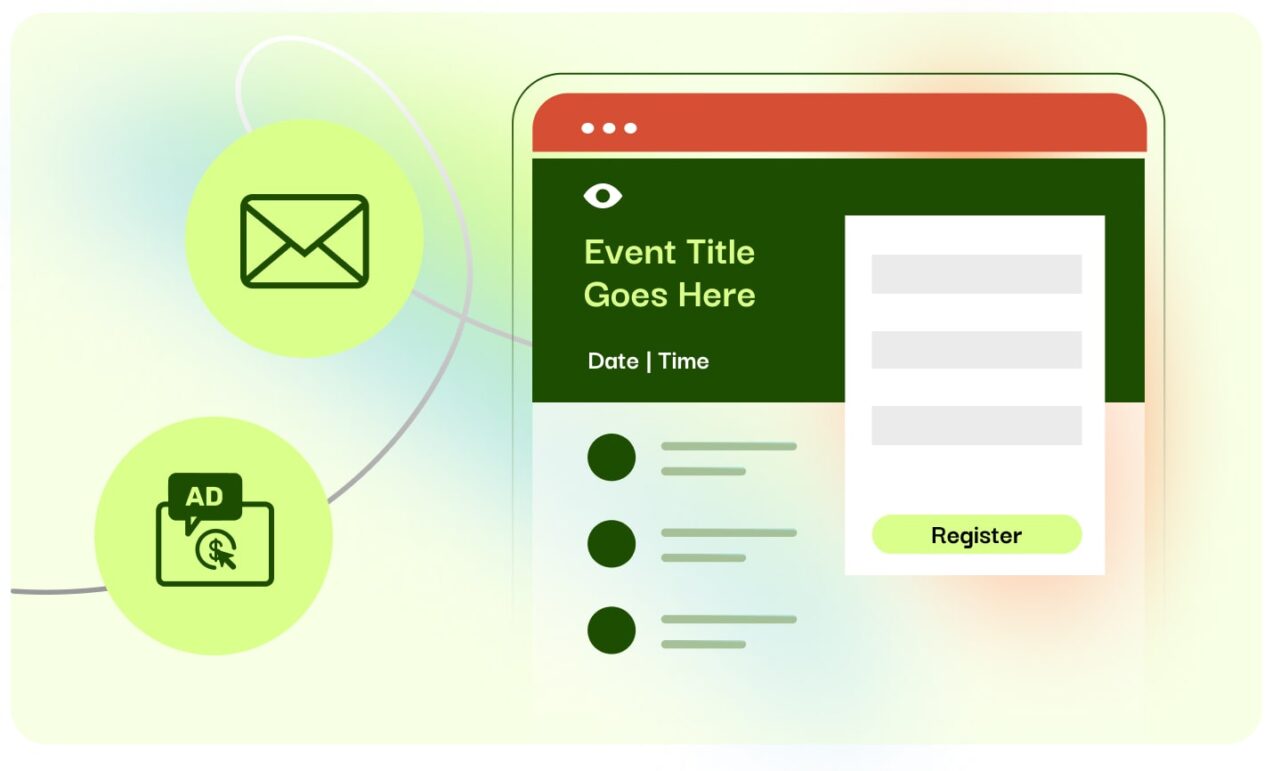
In this case, the landing page should have more details about your event, and a sign-up form where they can submit their information to register. Limit links and navigation ability to other areas of your website on this page. The main focus should be leading users down the conversion funnel.
What should I include on my landing page?
A landing page should be cohesive alongside the digital marketing efforts that are leading users to it. For example, you’ll want to ensure you avoid bad messaging correlation between the two:

Bad Example
- Ad copy: Increase your sales pipeline with our lead generation tool.
- Landing page campaign strategy: Explore our full suite of marketing automation tools to help your business grow.
This is bad messaging because the ad promises a specific solution, but the landing page shifts focus to a broader offering that includes automation tools not associated with lead generation.
Good Example
- Ad copy: Boost your sales with targeted lead generation – try it now!
- Landing page campaign strategy: Our platform helps you generate high-quality leads through targeted campaigns, tailored for your business. Start a free trial today!
This is a good example because the ad messaging clearly aligns with the offering on the landing page. It’s specific, actionable and meets the user’s expectations. This messaging strategy works because the landing page enforces the time-sensitive copy in the ad. It pushes the urgency for users to convert by registering now.
Here are some other key elements that should always be present on a landing page:
- A compelling headline that is clear and aligned with the offer or action you want the user to take
- High-quality visuals that support the messaging and are in alignment to any visuals used in the ad
- A strong call-to-action (CTA) that is direct and enticing
Other components or links on the page should be minimal, to avoid distraction and a loss of conversion. Some additional best practices to consider:
- Optimized layouts for mobile responsiveness
- A/B tests between two landing page variations
How can I drive qualified traffic to my landing pages?
This is essential for maximizing conversions and getting the best return on investment. Knowing your audience and where they are spending time online is the first step. Then you’ll want to implement strategies that drive your audience to the landing page for conversion. Try using paid advertising, email marketing, or other strategic partnerships.
Let’s dive into how each of these can be useful, starting with paid advertising.
Paid advertising can include anything from paid Google search ads, to social media boosted posts, to banner display ads. You can reach users through keyword, industry and audience targeting. Then you’ll want to run relevant ads that align with whatever is being offered or promoted on your landing page.
Email marketing is a great way to funnel users. The entirety of the email content can be focused on promoting the action you want users to take on your landing page. Once users have read your email and clicked through, they have already proven interested in your content. They are now more likely to convert after arriving on-page. As a tip, consider segmented email lists or nurture campaigns that can be personalized to specific stages of the customer journey. Always make sure the email content and its CTA are clear and valuable.
It’s also a great idea to leverage partnerships to drive prospective customers. This could be through industry influencers or thought leaders. They could write guest blog posts, promote your brand on social media or share about your event with their audience. All of these actions would have links back to your landing page.
How do I track if my landing pages are successful?
Once your landing page starts to receive traffic from your marketing efforts, you’ll want to start measuring its success. Using tools like Google Analytics, Google Tag Manager, HubSpot or HotJar are especially helpful.
The metrics you track could include click-through rate (CTR), conversion rate, lead quality, bounce rate, session duration and any A/B testing results.
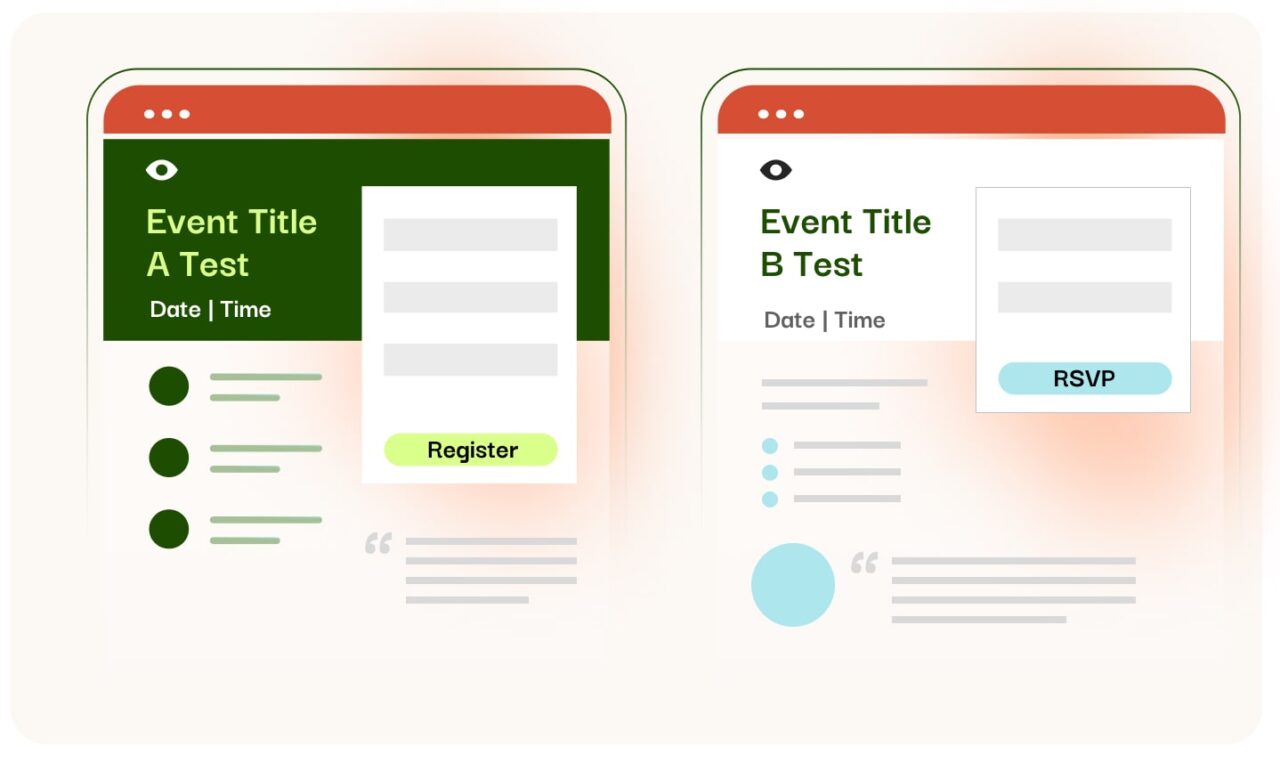
- A high CTR from your ad suggests that your offer is compelling enough for your target audience to want to learn more from the landing page.
- A high conversion rate is the percentage of visitors who complete your desired action on the landing page (registering, downloading content, etc.). This KPI is a direct measure of how effective your landing page was at convincing users to take the desired action.
- The quality of leads you receive from the landing page’s CTA is often more important than the quantity of leads received. Tracking this is important. Consider qualifying factors such as relevant ad copy and clear CTA’s to better reach your audience.
- A high bounce rate suggests the messaging between the ad copy and the landing page copy are not in alignment. Or, it could indicate the landing page itself may not be engaging enough.
- If a user is spending a lot of time on your landing page, it generally indicates they are engaged with the content. This metric should be compared against the complexity of the page. Shorter pages with direct CTAs will drive a shorter session duration than a page that requires lots of reading before a conversion event.
- All of the above KPIs should be consistently monitored throughout a campaign to determine results of any A/B testing. Testing between page variations can be helpful in optimizing longer-running campaigns.
As you collect data, you should compare it against any past campaigns you’ve run, or the industry standard. Not sure how to figure this out?
We can help you get started.
If you’re looking to significantly help your business increase engagement and conversions, optimize lead generation and drive qualified traffic, we’d love to help you get started.


